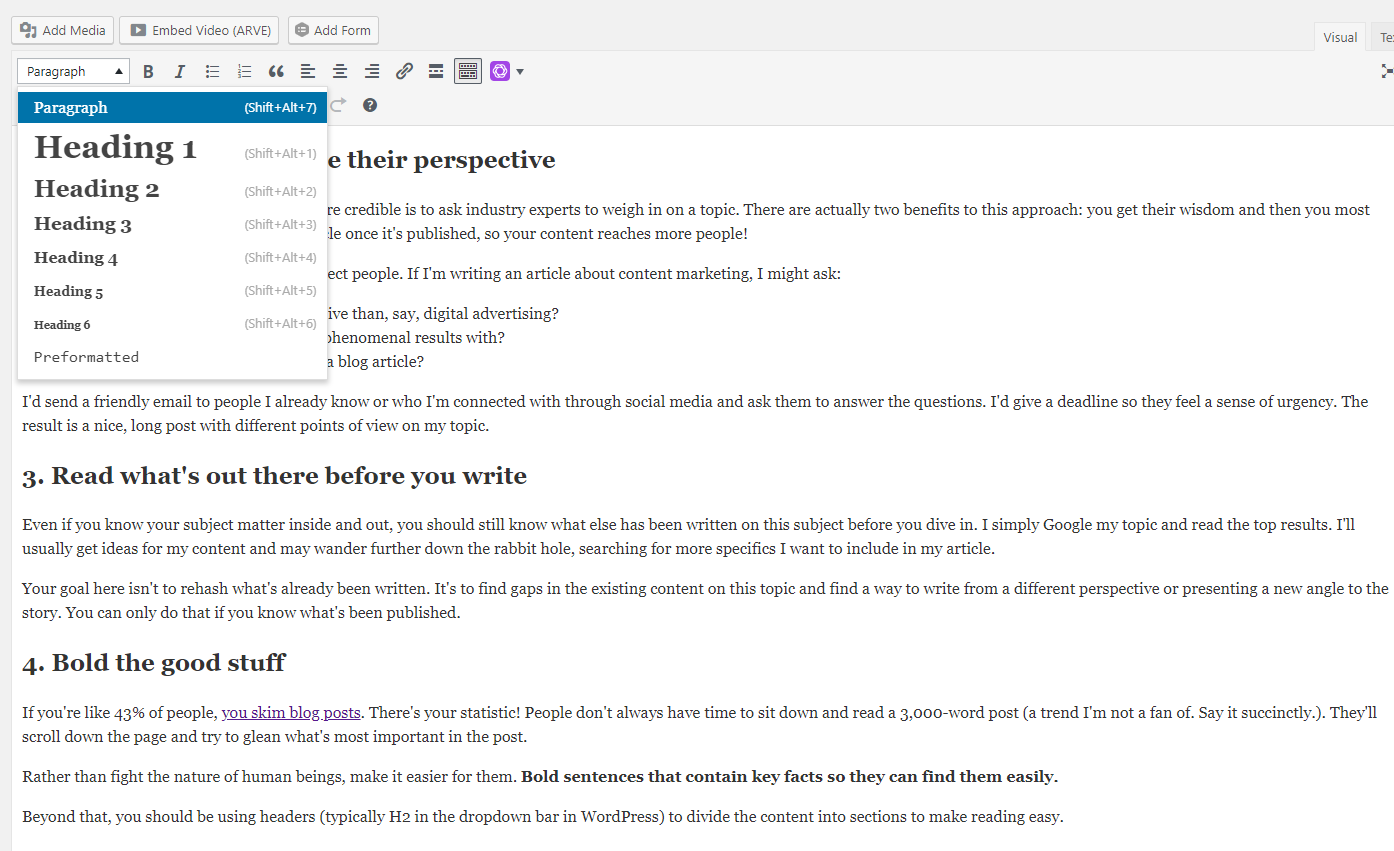
7 Ways to Increase the Credibility of Your Blog Content
Originally published on AllBusiness.
Would you believe I’ve written thousands of articles over the past decade? Each time I write a new article, I have to find a way to make the subject fresh again. I want to ensure that my readers find what I write useful and informative, so I use the following strategies to build credibility with my content. Feel free to use these tips to boost the credibility of your blog content and see if you attract more blog visitors!
1. Find statistics to back your content
I wanted to find a statistic about using statistics in your content marketing, but couldn’t find one! Until proven otherwise, your content is conjecture. It’s your opinion. That’s why adding statistics and research to your blog articles can help you validate your point of view.
Let’s say I’m writing an article arguing that content marketing can be more effective than any other type of marketing or advertising. That’s just my opinion at this point, but my reader wants proof:
Think content marketing is too big a headache to bother with? Think again, at least if you want to attract new business: content marketing gets 3x the leads per dollar spent than paid search does. Why are you still wasting money on the wrong marketing tactics?
Instantly, I’ve got backup for my argument that content marketing rocks.
Always link to the original source of the statistic. If you found it on a roundup of other statistics, click to the original data. I try to keep the stats I use within a year old so they’re not too crusty to be useful.
2. Source experts to share their perspective
Another way to make your blog content more credible is to ask industry experts to weigh in on a topic. There are actually two benefits to this approach: you get their wisdom and then you most likely get their support in sharing your article once it’s published, so your content reaches more people!
I like to have a few questions that I send select people. If I’m writing an article about content marketing, I might ask:
- Why is content marketing more effective than, say, digital advertising?
- What types of content have you seen phenomenal results with?
- How can businesses drive leads from a blog article?
I’d send a friendly email to people I already know or who I’m connected with through social media and ask them to answer the questions. I’d give a deadline so they feel a sense of urgency. The result is a nice, long post with different points of view on my topic.
3. Read what’s out there before you write
Even if you know your subject matter inside and out, you should still know what else has been written on this subject before you dive in if you want to enhance the credibility of your blog. I simply Google my topic and read the top results. I’ll usually get ideas for my content and may wander further down the rabbit hole, searching for more specifics I want to include in my article.
Your goal here isn’t to rehash what’s already been written. It’s to find gaps in the existing content on this topic and find a way to write from a different perspective or present a new angle to the story. You can only do that if you know what’s been published.
4. Bold the good stuff
If you’re like 43% of people, you skim blog posts. (There’s your statistic!) People don’t always have time to sit down and read a 3,000-word post—a trend I’m not a fan of. Say it succinctly. They’ll scroll down the page and try to glean what’s most important in the post.
Rather than fight the nature of human beings, make it easier for them. Bold sentences that contain key facts so they can find them easily.
Beyond that, you should be using headers (typically H2 in the dropdown bar in WordPress) to divide the content into sections to make reading easy.

5. Use images to illustrate a point
If your article is technical or explaining a process, take screenshots to show your readers exactly how to do something. I did just that in the last section to show you where to find the H2 option.
If you’ve got a ton of research in your posts, consider creating custom charts, graphs, or infographics to make the data more digestible.
If your content doesn’t lend itself to screenshots or charts, use stock photos to keep readers interested visually and increase the credibility of your blog content.
6. Talk to your audience directly
There’s a careful balance of not talking over your readers’ heads while also not treating them like children. You first have to start by knowing who your audience is. If it’s rocket scientists, you better be as smart as a rocket scientist so you can speak intelligently to that audience. If it’s a mixed bag, write to about a seventh-grade audience.
Where did that number come from? There’s something called the Flesch-Kincaid readability score, which analyzes your content to determine what grade level could understand it and how readable it is. If you’re not sure if your content is hitting the mark with your audience, use this readability test to see how it fares.
7. Back up your content with examples
If you’re talking about something you think your audience should do (use content marketing, for instance), have examples that prove your point. It could be from your experience working with clients or case studies you pull from online.
For my article on content marketing, I could talk about the work I’ve done for a mobile marketing company, helping them effectively establish themselves as a leader in their space. That might compel readers to want to work with me.
I hope these tips help you enhance your content and build the credibility of your blog content. Remember: it’s brands that put effort into the content they create that attract more blog visitors and customers.


